When it comes to ballroom dancing, there are so many styles to choose from that it can be overwhelming to pick just one. Each style has its own unique characteristics, history, and music, making them all worth exploring. Whether you’re new to ballroom dancing or you’re a seasoned pro, it’s important to have a solid understanding of the different styles so you can choose the one that fits your personality, skill level, and music tastes. In this article, we’ll explore 10 of the most popular ballroom dance styles and guide you through their histories and steps. Get ready to put on your dancing shoes and hit the dance floor with confidence!
1. Waltz

The waltz is a classic ballroom dance style that has been enjoyed across the world for centuries. This graceful dance is essential for any ballroom dancer to master, as it forms the basis for many other dances. The waltz is often associated with elegance, sophistication, and romance, and has a rich history that adds to its allure. In this section, we will take a closer look at the history of the waltz and provide a step-by-step guide on how to perform it with finesse. Whether you are a seasoned dancer or a beginner, this section will provide you with valuable information to help you perfect this timeless dance style. If you are new to ballroom dancing and want to learn the basics, check out our article on 5 basic steps for ballroom dance beginners.
The History of Waltz
Waltz is a ballroom dance that originated in Germany in the 17th century. It is characterized by its smooth, flowing movements and is usually danced to slow, 3/4 time music. Initially, the dance was widely criticized for being too “scandalous” and “immoral” because it involved close contact between partners and the gliding movement of the dancers. However, the dance gradually became more acceptable and popular throughout Europe in the 18th and 19th centuries.
During the 19th century, the waltz became the most popular ballroom dance in both Europe and America. One reason for its popularity was the introduction of the Viennese Waltz, a faster version that was even more exciting to watch and dance. The Waltz also paved the way for other ballroom dances to gain acceptance, setting the stage for the proliferation of ballroom dance styles that followed.
The Waltz has had a significant impact on the evolution of ballroom dance. Its influence is evident in many other dance styles, including the Foxtrot and Quickstep. Today, the Waltz remains an important dance style, especially for beginners learning how to ballroom dance. Its elegant and romantic nature makes it a favorite among many dancers.
Understanding the history of Waltz can help dancers appreciate the traditions and etiquette associated with ballroom dance. By knowing the roots of the Waltz, dancers can better understand the origins and characteristics of other ballroom dance styles. This can enrich their experience and lead to a deeper appreciation of the art of ballroom dance.
How to Do the Waltz
The Waltz is a classic ballroom dance that originated in Austria in the late 18th century. It is a graceful dance that is characterized by its slow, smooth, and flowing movements. In order to perform the Waltz, there are several key steps that you need to master.
Step 1: Start with the basic position. Stand up straight and tall, with your feet together and your arms at your sides. Your partner should stand facing you.
Step 2: Take the first step. The leader should start by taking a step forward with their left foot, while the follower takes a step back with their right foot. This should be a slow and smooth movement.
Step 3: Move into the first turn. The leader should then take a step to the side with their right foot and turn to face their partner. The follower should take a step to the side with their left foot and continue to look at their partner.
Step 4: Complete the turn. The leader should then take a step back with their left foot and turn back to face the direction they were originally facing. The follower should take a step forward with their right foot, completing the turn.
Step 5: Repeat. The above steps should be repeated, but this time the leader should start by taking a step forward with their right foot, while the follower takes a step back with their left foot.
Step 6: Add a flourish. Once you have mastered the basic steps, you can add in a few extra flourishes, such as twirls, pivots, and dips. However, it’s important to remember that these should only be added once you have mastered the basic steps.
When performing the Waltz, it’s important to wear appropriate ballroom dance shoes and follow proper ballroom dance etiquette. Additionally, it’s also helpful to understand the history and evolution of ballroom dance as well as the different types of ballroom dance music. The Waltz is a beautiful and elegant dance that can be enjoyed by dancers of all skill levels.
2. Tango
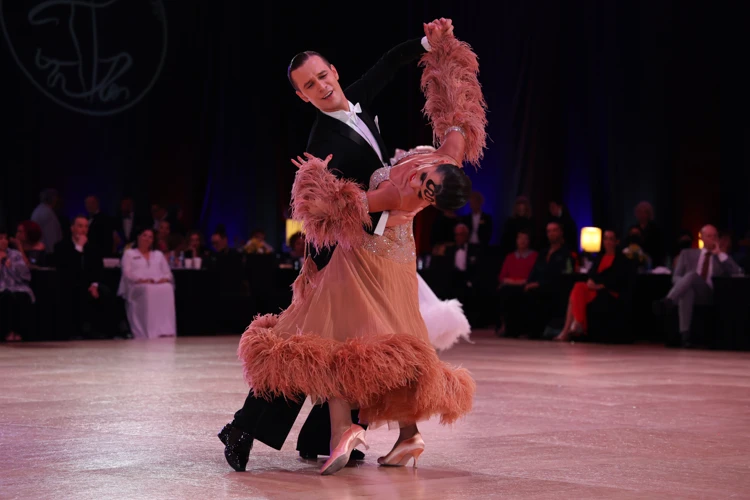
The next dance style on our list is a passionate and dramatic one – the Tango. Originating from Argentina, this dance has captivated the hearts of dancers and audiences alike with its intense energy and elegant movements. The history of Tango is rich and fascinating, and it has gone through a lot of changes throughout time. If you want to learn more about the evolution of ballroom dance in general, make sure to check out our article on the history and evolution of ballroom dance. Before you can start dancing Tango, you will need the right equipment, such as proper ballroom dance shoes, and an understanding of ballroom dance etiquette. So, let’s dive into the history of Tango and then learn how to do this fiery dance style!
The History of Tango
The Tango is a dramatic and sensual partner dance that originated in the late 19th century in the outskirts of Buenos Aires, Argentina. There are several theories about the creation of Tango, but its exact origins are still unclear. One theory suggests that it emerged from African rhythms that were brought over by slaves and mixed with the music of the immigrant population. Another theory suggests that Tango was first danced in the brothels of Buenos Aires in the 1880s.
Regardless of its origins, Tango quickly became popular in Buenos Aires, and from there it spread to other parts of the world. In the early 20th century, Tango was introduced to Europe and became an instant sensation, with people flocking to ballrooms to learn the dance. It also became an important part of Argentine culture and identity, and is now recognized as a UNESCO Intangible Cultural Heritage.
The music of Tango plays a vital role in the dance. It is characterized by its melancholic and passionate sound, with the bandoneón, a type of accordion, being the most iconic instrument used in Tango music. The lyrics of Tango songs often speak of love, loss, and longing, and the music itself often reflects the tumultuous emotions of the dance.
Over the years, Tango has evolved into different styles, including the Argentine Tango and the Ballroom Tango. The Argentine Tango is the original and more improvisational version of the dance, while Ballroom Tango is a more structured and precise version that is performed in ballroom dance competitions.
Today, Tango continues to be a popular dance around the world, with many Tango festivals and competitions being held each year. Its unique style and history make Tango a fascinating dance to learn and watch, and it remains a beloved part of both Argentine and global culture.
If you are interested in learning more about ballroom dancing or the benefits it can have for your health, check out 7 Benefits of Ballroom Dance for Your Health. Additionally, if you want to know more about the different types of music that are used in ballroom dancing, read our article on the Types of Music Used in Ballroom Dancing.
How to Do the Tango
The Tango is a passionate and dramatic dance that originated in Buenos Aires, Argentina. Here are the steps to master the Tango:
1. Posture: Stand up straight with your feet together and your weight evenly distributed. Keep your elbows tucked in and your shoulders relaxed. Have a good connection with your partner through your arms and hold their hand firmly.
2. Basic Step: The Tango basic step consists of four quick steps. Start by taking a long step forward with your left foot, then bring your right foot to your left foot, take a step to the side with your left foot, and finally, bring your right foot next to your left foot. Repeat this sequence but starting with the right foot.
3. Promenade Position: This position is where both partners step forward and backward, creating a walking motion. To do this, the leader starts with their left foot and the follower with their right foot. As you step forward, keep your knees slightly bent and lean forward, chest-to-chest with your partner.
4. Corte: Corte is a pose where the leader dips their partner to create a dramatic effect. To do this, the leader leads their partner forward and then quickly pulls them back, dipping them down and pulling them back up.
5. Flicks and Kicks: Flicks and kicks are used to add flair and personality to the Tango. To do this, the leader flicks their leg forward or kicks their leg back while the follower mirrors their movements.
Remember to work on your timing and connection with your partner to truly master the Tango. With practice, you’ll be dancing the Tango like a pro!
For more information on ballroom dance, check out our article on top 5 ballroom dance competitions or how ballroom dancing can improve your relationship.
3. Foxtrot
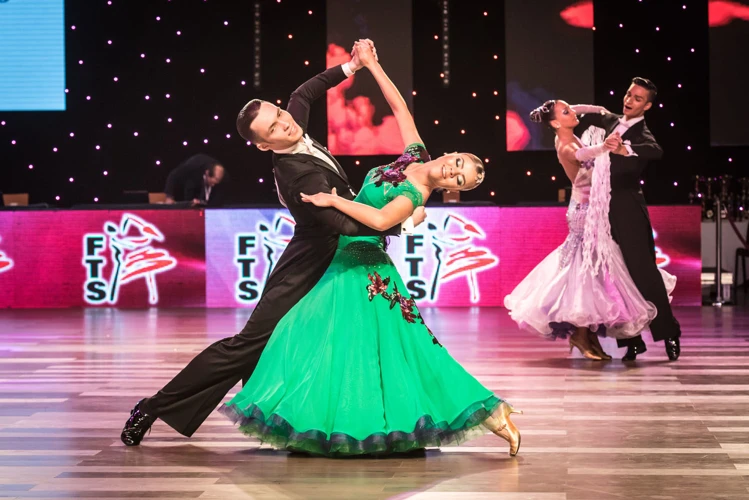
When it comes to ballroom dancing, the Foxtrot is one of the most popular and elegant dance styles that you should have in your repertoire. The Foxtrot is a smooth dance style that is characterized by its flowing movements and graceful steps. This dance style is often featured in movies, TV shows, and competitions, making it a great choice for those who want to learn a classic dance style that will never go out of style. In this section, we will delve into the history of the Foxtrot and provide a step-by-step guide for beginners who want to learn how to do the Foxtrot. So, let’s get started!
The History of Foxtrot
The history of Foxtrot is quite intriguing. It is believed that this ballroom dance style originated in the early 20th century in the United States. The dance`s name comes from its similarity to the steps a fox takes when it walks – “slow-slow-quick-quick”.
1. Jazz Era Influence
During the jazz era of the 1920s, Foxtrot became extremely popular. With the rise of jazz music, the dance style was adapted to fit the music’s beats and rhythm. As a result, the dance became more dynamic and included movements such as dips, slides and twirls.
2. World War I and World War II
Foxtrot also gained popularity during the World War I and World War II period because soldiers learned the dance as part of their training. After the end of the Great War, Foxtrot made its way across the Atlantic ocean to Europe.
3. Foxtrot Variations
There are two variations of Foxtrot: American and International. The American Foxtrot is smoother, with more focus on the dancers’ posture and movement. Meanwhile, the International Foxtrot is more theatrical and allows for more creativity in movements. Both variations are still performed today and remain popular in ballroom dancing competitions.
4. Modern Foxtrot
Today, Foxtrot has evolved into a modern style of dance that still retains the classic elements of the dance while incorporating new techniques and movements. The name “Foxtrot” has also been used for a variety of popular music tracks over the years, ensuring that the dance style remains relevant and current.
The history of Foxtrot is rich and diverse, spanning several decades and continents. It continues to fascinate and inspire dancers around the world, making it a timeless and beloved ballroom dance style.
How to Do the Foxtrot
The foxtrot is a smooth and elegant ballroom dance characterized by long, flowing movements and syncopated rhythms. Here are the steps to do the foxtrot:
| Step | Description |
|---|---|
| Step 1 | Start in a closed dance position, with the lead’s right hand holding the follow’s left hand and the lead’s left hand on the follow’s shoulder blade. Both partners should have their free arms extended to the side, parallel to the ground. |
| Step 2 | Take a slow step forward with your left foot, allowing your body weight to transfer onto that foot. |
| Step 3 | Take a slow step forward with your right foot, again transferring your weight onto that foot. |
| Step 4 | Take a slow step to the side with your left foot, shifting your weight over to that foot. |
| Step 5 | Cross your right foot behind your left foot, taking a quick step. Your weight should shift back to your left foot as you do this. |
| Step 6 | Take a slow step to the side with your left foot again, transferring your weight onto that foot. |
| Step 7 | Take a slow step back with your right foot, shifting your weight back onto that foot. |
| Step 8 | Take a slow step back with your left foot, transferring your weight back onto that foot and returning to the starting position. |
Remember to keep your upper body straight and your posture upright throughout the dance. It’s also important to maintain a smooth, gliding motion as you move across the floor. With practice, you’ll be able to master the foxtrot and impress your dance partners with your smooth moves.
4. Viennese Waltz
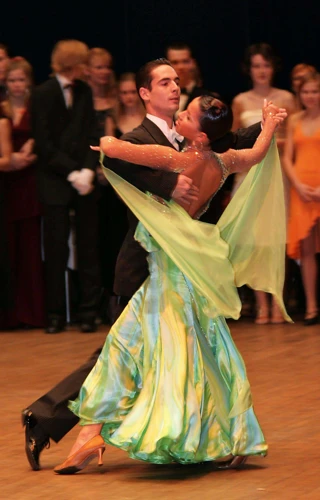
As we continue our exploration of popular ballroom dance styles, we come across a dance that hails from the city of Vienna and is known for its fast-paced and flowing movements. This dance is none other than the Viennese Waltz, which has a rich history and is still as beloved today as it was when it first emerged in the early 1800s. Let’s discover the captivating story behind this dance and how you can execute its graceful steps with grace and ease.
The History of Viennese Waltz
The Viennese Waltz is a type of ballroom dance that originated in Austria in the 18th century. It is said to have been introduced during the reign of the Austrian empress, Maria Theresa. Initially, this dance form was performed in closed position, with the partners facing each other. However, over time, it evolved to include more open movements and intricate floor patterns.
The Viennese Waltz gained popularity throughout Europe in the 19th century and became a part of the ballroom dance repertoire. It is known for its quick tempo, 3/4 time signature, and elegant flowing movements. It is performed to music with a tempo of about 180-200 beats per minute.
Interestingly, the Viennese Waltz was not always a socially accepted dance form. In the early 19th century, it was considered scandalous and immoral due to the close proximity of the partners and the high speed of the dance. However, eventually it gained mainstream popularity among both the aristocracy and common people.
Viennese Waltz was also influenced by other dance forms like the French Contradanse and the German Landler. These dance forms had similar movements and contributed to the development of Viennese Waltz.
In the mid-1920s, the International Dance Sport Federation (IDSF) established specific rules and regulations for Viennese Waltz. This led to its formalization and standardization, making it a widely recognized ballroom dance style.
Today, Viennese Waltz is still popular around the world, and its elegant and graceful movements continue to captivate audiences.
How to Do the Viennese Waltz
To perform the Viennese Waltz, follow these simple steps:
| Step | Action |
|---|---|
| 1 | Begin in closed dance position with your partner, facing the direction of dance. |
| 2 | Take three steps forward, starting with your left foot, and do a half-turn to the left on the third step. |
| 3 | Take three steps backward, starting with your right foot, and do a half-turn to the right on the third step. |
| 4 | Repeat steps 2 and 3 continuously, rotating clockwise around the dance floor. |
It is important to maintain proper posture and frame throughout the dance. Keep your elbows up and your shoulders down. Your steps should be light and precise, with a slight bounce to the movement.
It may take some practice to master the quick pace of the Viennese Waltz, but with dedication and patience, it can become a breathtakingly beautiful dance to watch and perform.
5. Quickstep
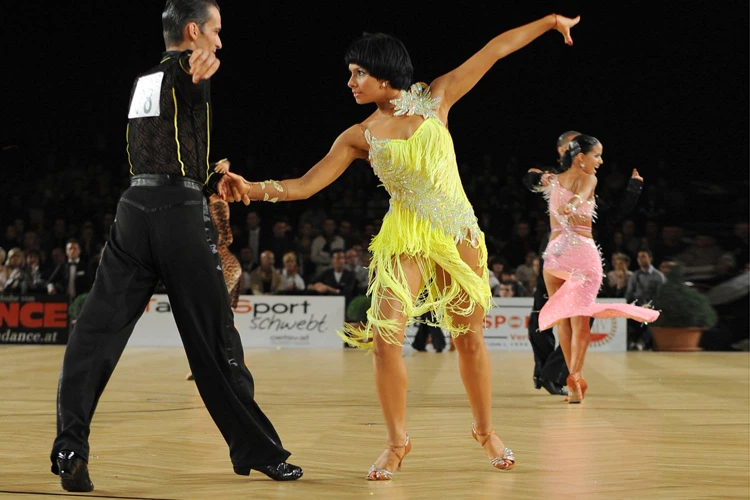
As we continue our exploration of popular ballroom dance styles, we come to a lively and energetic partner dance known as the Quickstep. This dance style developed during the 1920s in England as a faster version of the Foxtrot, with influences from other dance styles such as Charleston and Swing. With its upbeat tempo and fancy footwork, the Quickstep is a fun and entertaining dance to watch and perform. In this section, we’ll delve into the history of the Quickstep and explore the basic steps and techniques needed to dance it like a pro.
The History of Quickstep
Quickstep is a ballroom dance style that originated from a combination of Foxtrot, Charleston, and other dance forms in the 1920s. Its fast-paced movements and jovial nature make it a popular dance style in clubs and ballroom competitions.
| Origin | The Quickstep originated in the 1920s in New York City, where it evolved from the Foxtrot and the Charleston. |
| Influences | The Quickstep was heavily influenced by the Jazz Age and the music of ragtime and swing. |
| Characteristics | The Quickstep is a lively and energetic dance style, with fast movements and quick footwork. It is known for its hops, skips, and runs, and its use of syncopation and other playful rhythms. |
| Popularity | The Quickstep is a popular dance style in ballroom dancing, and is often performed in competitions and showcases. It is also a popular dance style in clubs and among social dancers. |
The Quickstep’s origins can be traced back to the early 20th century, when the Foxtrot, the Charleston, and other dance forms were popular in New York City’s lively music and nightclub scene. As these dance styles evolved, they combined to form the Quickstep, which was characterized by its fast pace and energetic movements.
The Quickstep was heavily influenced by the music of ragtime and swing, which were popular genres in the early 20th century. The dance style became more playful and syncopated, incorporating hops, skips, and runs, which made it a more exciting dance style to watch and perform.
Today, the Quickstep is a popular dance style in ballroom dancing, with many competitions and showcases dedicated to this fast-paced dance. It is also a popular dance style among social dancers and is often performed in clubs and other social events. Its lively and energetic nature makes it a fun and playful dance style to learn and perform.
How to Do the Quickstep
The Quickstep is a lively ballroom dance that evolved from a combination of Foxtrot and Charleston steps in the 1920s. It’s a fun and energetic dance that is perfect for uptempo swing and big band music. Here’s how to do the Quickstep:
- Start with the frame. Stand up straight with your feet together and toes pointed slightly outward. The leader should place their right hand on the follower’s waist, while the follower places their left hand on the leader’s shoulder. The leader’s left hand and follower’s right hand should be clasped together, with the elbows bent and held close to the body.
- Begin with a chassé. Take a step to the side with your lead foot, then bring your other foot together with it. Repeat this pattern, moving to the left or right as directed by the leader.
- Add a forward or backward step. After the chassé, the leader can direct the follower to take a step forward or backward with their lead foot. The follower should follow along, keeping their balance centered over the balls of their feet.
- Incorporate hops and kicks. The Quickstep is a lively dance, so feel free to incorporate small hops or kicks into your movements. However, be sure to maintain your balance and stay connected with your partner at all times.
- Finish with a spin. The Quickstep often ends with a spin or twirl. The follower should step forward with their lead foot, then pivot on the ball of that foot while the leader provides a gentle push to help them complete the turn.
By following these steps, you can learn how to do the Quickstep and enjoy all the energy and excitement that this lively ballroom dance has to offer.
6. Cha-Cha
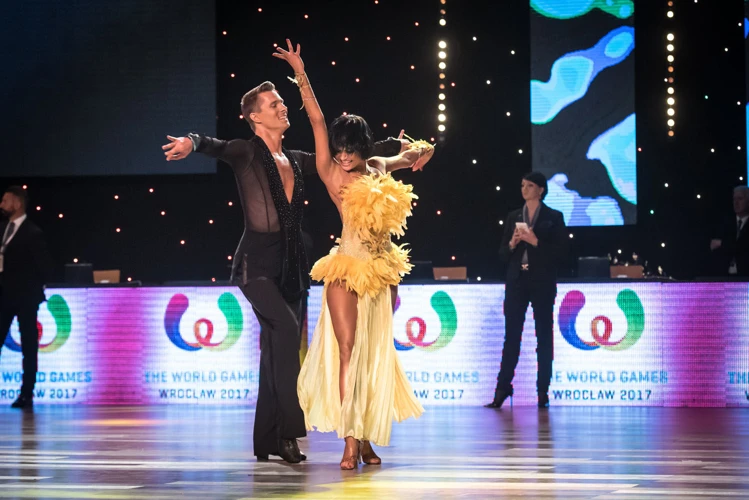
As we move on to the sixth dance style on the list, the rhythm picks up with the infectious beat of the cha-cha. This Latin dance originated in Cuba and quickly made its way to the ballroom scene, captivating audiences with its playful steps and flirty movements. Get ready to learn about the history and steps of this lively dance style.
The History of Cha-Cha
The cha-cha is a Cuban dance that originated in the 1950s. Its roots can be traced back to the danzón, a Cuban dance of the late 19th century. However, it wasn’t until the early 1950s that the cha-cha as we know it today was born.
Evolution from Mambo: The cha-cha was born out of the mambo, which was already a popular dance style in Cuba and other Latin American countries. The mambo had a distinctive “1-2-3-4, cha-cha-cha” rhythm, and it was this rhythm that formed the basis for the cha-cha.
Origins of the Name: The cha-cha is named after the sound of feet shuffling on the dance floor. The name “cha-cha” is derived from the Spanish word for “shuffling”.
Rise to Popularity: The cha-cha quickly caught on in the United States, thanks in part to the influence of Latin American musicians like Tito Puente and Xavier Cugat. The dance spread to Europe in the 1950s and quickly became popular there as well.
Influence on Other Styles: The cha-cha had a significant influence on other Latin American dance styles like the rumba and the salsa. It also had an impact on non-Latin dances such as the twist.
Cultural Significance: The cha-cha is an important part of Latin American culture and is often performed at weddings, quinceañeras, and other special events. It is also celebrated in the annual International Cha-Cha Championship, held in Hong Kong.
The cha-cha is a lively and fun dance that has become a staple of Latin American and worldwide culture. Its origins in the mambo, unique name, and rise to popularity make it an important part of the history of ballroom dance.
How to Do the Cha-Cha
To perform the Cha-Cha, follow these steps:
- Start with the basic step: Begin with your weight on your left foot and your partner’s weight on their right foot. Take a step forward with your right foot, then step to the side with your left foot. Bring your right foot together with your left foot, and then pause for one beat. Repeat the same steps starting with your left foot. This is called the basic step.
- Add the Cha-Cha motion: As you step forward with your right foot, shift your weight forward and sway your hips forward as well. On the “cha” count, twist your hips to the right and bring your right foot in to meet your left foot. Step to the side with your left foot and sway your hips to the left on the “cha” count. Bring your right foot in to meet your left foot again, and pause for one beat. Repeat with your left foot forward.
- Practice the Cuban motion: The Cha-Cha is known for its unique Cuban motion. To do this, as you step forward with one foot, bend your knee slightly and push your hip in the opposite direction. For example, if you step forward with your right foot, bend your right knee slightly and push your left hip out to the left. This will create the distinctive hip swaying motion of the Cha-Cha.
- Incorporate turns and spins: As you become more comfortable with the basic steps, you can add turns and spins to your Cha-Cha routine. One popular move is the underarm turn, where the leader raises their left hand and the follower spins under it, returning to the basic step.
- Pay attention to the music: The Cha-Cha is danced to music with a strong beat, typically with a tempo of 110 to 130 beats per minute. Listen to the music and let the beat guide your steps and movements.
- Stay connected with your partner: The Cha-Cha is a partner dance, so it’s important to stay connected and in sync with your partner. Keep your handhold firm but not too tight, and maintain eye contact as you dance.
With practice and dedication, anyone can learn to Cha-Cha like a pro. So put on some lively music and get ready to move your hips!
7. Rumba
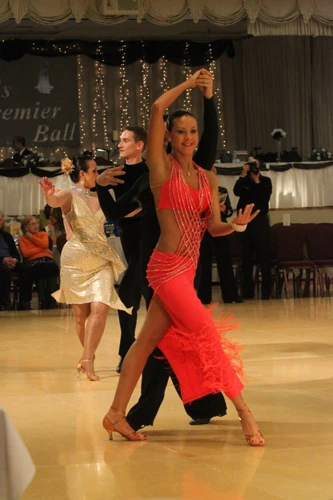
As we delve deeper into the world of ballroom dance, we come across one of the most sensual and romantic styles – the Rumba. Originating from Cuba, this dance has created waves all over the world for its expressive movements and intimate choreography. If you’re looking to add a little heat to your dance routine or impress your partner with a stunning performance, learning the Rumba might just be the perfect fit for you. Let’s take a closer look at the history and steps of this mesmerizing dance form.
The History of Rumba
Originating in Cuba in the late 19th century, the rumba is a sensual and flirtatious dance that has become extremely popular around the world. Its roots can be traced to a combination of African drum rhythms and Spanish folk music. In the early 20th century, the rumba was popularized in North America and Europe, becoming a mainstream ballroom dance in the 1940s.
One of the most significant figures in the history of the rumba was Xavier Cugat, a bandleader who popularized the genre in the United States in the 1930s and 1940s. Cugat’s performances often featured Afro-Cuban rhythms and Latin American instrumentation, helping to introduce the rumba to a wider audience.
The rumba is known for its intricate hip movements and slow, sensuous style. Originally performed as a courtship dance, the rumba was considered scandalous because of its suggestive movements and overt sexuality. As a result, it was initially shunned by many in the upper echelons of society, but its popularity soon grew as people began to appreciate its dramatic flair and intense energy.
Today, the rumba is one of the most well-known and beloved ballroom dances, with competitions and performances taking place around the world. Its unique blend of African and Latin American influences has made it a cultural touchstone, and its timeless appeal shows no signs of fading any time soon.
How to Do the Rumba
The Rumba is a beautiful and sultry ballroom dance that originated in Cuba. It’s known for its slow, romantic movements and the subtle hip movements that dancers use to add an extra level of sensuality to their performances. Here’s how to do the Rumba:
| Step 1 | Start with your feet together and your weight on your left foot. Take a small step to the side with your right foot. |
| Step 2 | Shift your weight over to your right foot and take a small step forward with your left foot. Keep your knees slightly bent and your feet close to the floor. |
| Step 3 | Step to the side again with your right foot while shifting your weight over to that foot. As you do this, bring your left foot over to your right foot and take a small step together. |
| Step 4 | Shift your weight over to your left foot and take a small step back with your right foot. As you do this, your left foot should stay in place, but your leg should straighten out a bit. |
| Step 5 | Do another step to the side with your right foot while shifting your weight over to that foot. Bring your left foot over to your right foot and take a small step together as you did in Step 3. |
| Step 6 | Shift your weight over to your right foot and take a small step back with your left foot. Your right foot should stay in place, but your leg should straighten out a bit. |
| Step 7 | Step to the side again with your left foot while shifting your weight over to that foot. Bring your right foot over to your left foot and take a small step together. |
| Step 8 | Shift your weight back over to your right foot as you take a small step back with your left foot. Your right foot should stay in place, but your leg should straighten out a bit. |
Repeat these steps, starting with your right foot this time. As you become more comfortable with the rhythm, try adding in some hip action. In the Rumba, the hips move slightly forward on the first step, then back on the second step. This creates a subtle, sensual movement that’s characteristic of the dance.
Remember to keep your movements slow and controlled, emphasizing the romantic and sensual nature of the dance. With practice and dedication, you’ll soon be able to add your own flair and personality to this beautiful ballroom dance.
8. Samba
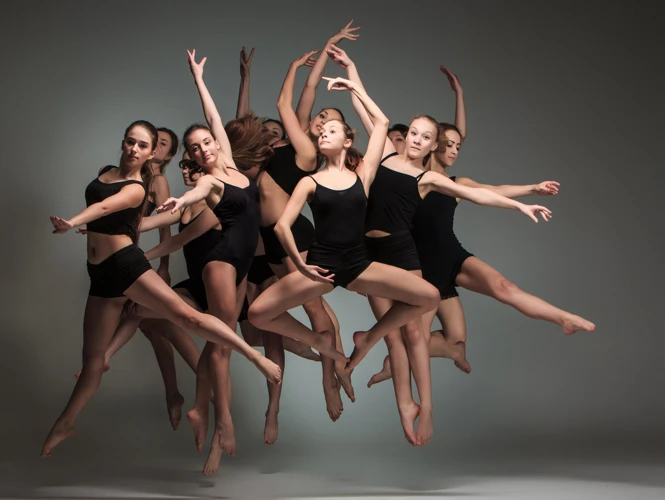
The vibrant and sensual rhythm of Brazilian Samba has enchanted dancers worldwide for decades. Originating in Rio de Janeiro, this energetic dance style is characterized by swaying hips, quick footwork, and lively music. It’s hard to resist the infectious beat of the Samba, and its popularity in ballroom competitions has turned it into one of the most renowned Latin dances. In this section, we’ll explore the history of the Samba and break down the basic steps you need to know to perform this sultry dance. Are you ready to unleash your inner carnival dancer? Let’s dive in!
The History of Samba
Samba is a lively and energetic dance style that originated in Brazil in the late 19th century. This dance style comes from a blend of African rhythms and European ballroom dances. Samba has its roots in the Afro-Brazilian communities of Bahia, where it was first performed during street festivals and carnivals.
The Samba style was eventually introduced to the European ballroom scene in the early part of the 20th century. It was adapted and refined to suit the more formal setting of the ballroom. Over time, the dance style evolved to include a variety of different techniques and styles.
The History of Samba can be broken down into four main periods:
- The Early Roots (late 19th century): The Samba dance style originated among the Afro-Brazilian communities in Bahia, where it was performed on the streets during festivals and carnivals.
- The Golden Era (1920s-1940s): This period saw the rise of the Samba in the European ballroom scene, where it was adapted to suit the formal setting of ballroom dancing. During this time, a number of famous Samba dancers emerged, including Aurora Paiva and Carmen Miranda.
- The Modern Era (1950s-1970s): In the post-World War II era, interest in Brazilian culture grew around the world. This led to a renewed interest in Samba as a dance style, and it became particularly popular in the United States and Europe.
- The Globalization of Samba (1980s-Present): Today, Samba is a popular dance style around the world, particularly in Latin America and parts of Europe. It continues to evolve and adapt to new trends and influences, while retaining its distinct Brazilian roots.
The history of Samba reflects the rich cultural heritage of Brazil and the influence of both African and European traditions. Samba remains a vibrant and dynamic dance style that continues to capture the imaginations of people around the world.
How to Do the Samba
To learn the Samba, follow these steps:
- Start with the basic step: Begin with the “basic samba step,” which is a combination of three-weight changes and a “ball change.” Step forward with your left foot, shifting your weight onto it, and then bringing your right foot to meet your left. Step back with your left foot, shifting your weight back onto it, and then bring your right foot to meet your left. Finally, step in place with your left foot and then perform a “ball change,” shifting your weight from your left foot to your right foot. Repeat this sequence of steps, starting with the right foot.
- Incorporate the bouncing motion: The biggest aspect of the Samba is the bouncing motion, known as “Samba bounce.” After performing the “ball change,” add a slight bounce to your step before moving on to the next step. Keep your knees slightly bent and move your hips up and down with the bounce.
- Include the Samba dip: The Samba dip is another signature move. After the “ball change,” dip down slightly by bending your knees and lowering your body. This is then followed by a quick bounce before the next step.
- Add arm and body movements: To make your Samba more expressive, add arm and body movements. Move your arms up and down in coordination with your steps and use your hips to add flair to your moves. To make your Samba look more authentic, add some upper body twisting to your steps.
- Practice and repeat: Like with all dances, practice is key. Repeat the basic steps and incorporate the Samba bounce and dip until you feel comfortable with the movements. Once you have mastered the basics, try to add your own flair and improvisation to make your Samba unique.
With practice, you can become a skilled Samba dancer, impressing onlookers with your moves and enjoying the vibrant Brazilian rhythm.
9. Paso Doble
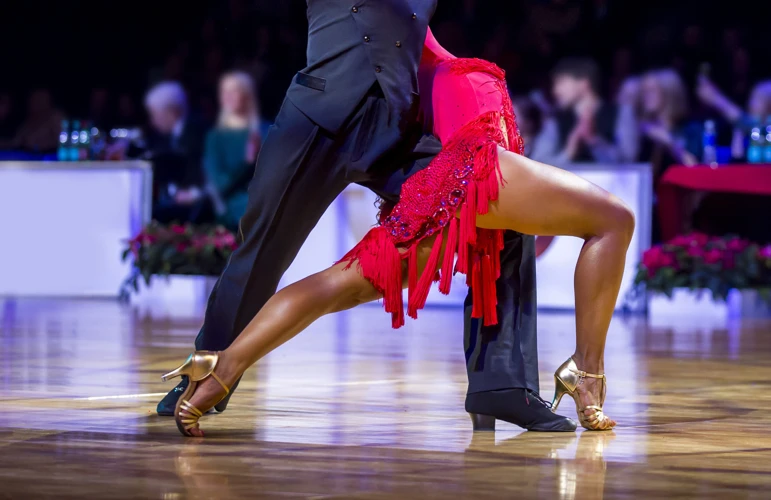
When it comes to passionate and dramatic ballroom dances, there are few styles that can compare to the Paso Doble. Originating in Spain, this bold and powerful dance was originally inspired by the bullfights of the country, but has since transformed into one of the most popular competitive dances around the world. With its strong rhythmic beats and dramatic flair, Paso Doble is a dance style that truly embodies the spirit of passion and confidence. In this section, we will delve into the history of this fierce dance style and take a closer look at how it is danced.
The History of Paso Doble
Paso Doble is a dance style that originated in Spain in the 16th century. It is also known as the “Spanish Two-Step” and is characterized by its fast-paced and dramatic movements. The name “Paso Doble” means “double step” in Spanish.
| Period | Explanation |
| Renaissance Period | Paso Doble’s roots can be traced back to the Renaissance period in Spain. During this time, the dance was a way for soldiers to train and practice their footwork. |
| 19th Century | In the 19th century, Paso Doble was introduced to bullfighting, where it was used to accompany the bullfighter’s grand entrance into the arena. |
| 20th Century | In the 20th century, Paso Doble became popular in dance competitions, particularly in France and Spain. It was introduced to the United States in the 1930s and quickly became a favorite among ballroom dancers. |
Today, Paso Doble is still popular in ballroom competitions and is often included in performances and exhibitions. The dance is an exciting and intense representation of the bullfight, with the male dancer portraying the matador and the female dancer portraying his cape. Paso Doble is a physically demanding dance that requires a lot of stamina and precision. It is a wonderful dance style to learn for those who wish to challenge themselves and showcase their dancing skills.
How to Do the Paso Doble
Paso Doble is a ballroom dance that originated in Spain, and it is often referred to as the dance of the bullfighter. It is a dramatic dance that emphasizes sharp, staccato movements, and it requires performers to embody the persona of a matador. Here is a step-by-step guide on how to do Paso Doble.
1. Stance: The dance begins with both partners standing erect, with their heels together, and their toes pointing outward in a V shape.
2. Posture: The man should stand tall and straight, with his chest held high, and his arms relaxed at his sides. The woman should also have good posture, with her shoulders back and her chest lifted.
3. The Basic Step: The basic step in Paso Doble involves four steps, with the dancers taking two full bars of music to complete the routine. The man starts by taking a step forward with his left foot, then bringing his right foot up to meet it. He then takes a step to the side with his left foot and brings his right foot to meet it. The woman takes the same steps, but in the opposite direction.
4. The Promenade: The Promenade is an extension of the basic step. The man wraps his left arm around the woman’s waist, and she places her left hand on his shoulder. They then take four steps following the basic step pattern, but turning at a 90-degree angle to the left or right.
5. The Flamenco Taps: This step involves the man tapping his foot on the ground, while the woman balances on one foot. It is a quick step that adds an element of drama to the dance.
6. The Cape: In this step, the man uses his imaginary cape to lead the woman around the dance floor, and she follows his movements with swaying and twisting steps.
7. The Finale: The finale is a dramatic ending to the dance, where the performers take a final pose with the man holding his arms outstretched and the woman crouched at his feet.
Remember, Paso Doble is a dance that requires good posture, sharp movements, and an element of drama. With practice, you can perfect the steps and put on a mesmerizing performance.
10. Jive
As we near the end of our journey through the popular ballroom dance styles, we come to a lively and energetic one – the jive. Developed in the United States in the 1930s, the jive has its roots in swing and jazz music. It is a fun and playful dance, characterized by fast footwork and quick, bouncy movements. In this section, we will dive into the history of the jive and learn how to do it ourselves. Get ready to put on your dancing shoes and let’s explore the jive!
The History of Jive
Jive is a ballroom dance style that originated in the United States in the 1930s. It is a very fast and energetic dance that is characterized by its lively music and dynamic footwork.
The Origins of Jive
Jive has its roots in swing, which was a popular dance style that emerged in the early 1900s. Swing was a type of jazz music that was characterized by its upbeat tempo and syncopated rhythms. Swing became increasingly popular in the United States in the 1920s and 1930s, and many dance styles, including jive, evolved from it.
The Development of Jive
Jive was first introduced in the United States in the 1930s and quickly gained popularity among young people. The dance was characterized by its fast pace and energetic movements, which made it a favorite among dancers looking for a challenge. Jive was often performed to swing music and was known for its acrobatic and athletic style.
In the 1940s, jive began to evolve into a more stylized dance style. Dancers began to incorporate more spins, turns, and dips into their routines, and the dance became more focused on footwork than on acrobatics. Jive continued to gain popularity throughout the 1950s and 1960s and became an important part of the rock and roll scene.
The Modern Era of Jive
Today, jive is still a popular dance style that is enjoyed by people all over the world. The dance has evolved to include elements of other styles, such as salsa and hip hop, and can be performed to a wide variety of music. Jive competitions are held all over the world, and many dancers specialize in this energetic and challenging style.
To summarize, jive is a fast-paced and energetic dance style that evolved from swing in the United States in the 1930s. Over the years, it has become more stylized and focused on footwork, and has incorporated elements of other dance styles. Today, it remains a popular dance style that is enjoyed by both beginners and experienced dancers alike.
| Decade | Development |
| 1930s | Jive was introduced in the United States and quickly gained popularity among young people. It was characterized by its fast pace and energetic movements. |
| 1940s | Jive began to evolve into a more stylized dance style, with dancers incorporating spins, turns, and dips into their routines. The dance became more focused on footwork than on acrobatics. |
| 1950s and 1960s | Jive continued to gain popularity and became an important part of the rock and roll scene. |
| Present day | Jive has evolved to include elements of other styles, such as salsa and hip hop, and remains a popular dance style enjoyed by people all over the world. |
How to Do the Jive
The Jive is a lively and energetic dance style that originated in the United States in the 1930s. Here are the steps to perform the Jive:
Step 1: Start by standing with your feet together and your weight evenly distributed between both feet.
Step 2: Take a small step backward with your left foot and then quickly step forward with your right foot while raising your left knee.
Step 3: Take another small step forward with your left foot and pivot on the ball of your left foot to turn 90 degrees to the left.
Step 4: Step backward with your right foot and pivot on the ball of your left foot to turn 90 degrees to the right.
Step 5: Step forward with your left foot and then quickly step forward with your right foot while raising your left knee.
Step 6: Take a small step backward with your left foot and pivot on the ball of your left foot to turn 90 degrees to the left.
Step 7: Step backward with your right foot and pivot on the ball of your left foot to turn 90 degrees to the right.
Step 8: Step forward with your left foot and then quickly step forward with your right foot while raising your left knee.
Repeat steps 2-8 to continue dancing the Jive. Remember to keep the steps small and controlled, and try to stay on the balls of your feet to create a bouncy rhythm. Practice with upbeat music and have fun dancing the Jive!
Conclusion
In conclusion, ballroom dancing offers a diverse array of styles to choose from, each with its unique history, rhythm, and technique. From the elegant gliding of the waltz to the fiery energy of the paso doble, there is a style to suit every taste and personality. Mastering these dance styles provides not only a physical workout but also a mental challenge, as dancers must strive to achieve proper posture, coordination, and musicality. Additionally, ballroom dancing provides an opportunity to socialize, develop confidence, and express oneself creatively. Whether done competitively or as a leisurely pastime, ballroom dancing is a wonderful way to explore the art of movement and connect with others through the power of music and dance. So give it a try and see for yourself the many benefits that ballroom dancing has to offer.
Preguntas frecuentes
Can I learn ballroom dance even if I have no prior experience?
Absolutely! Ballroom dance classes are structured to cater to individuals with varying levels of experience, including beginners.
What type of attire is appropriate for ballroom dance classes?
It is recommended to wear comfortable clothing that allows you to move freely, such as workout gear or dancewear. It is also advised to wear appropriate shoes with a smooth sole.
Do I need a partner to attend ballroom dance classes?
No, it is not necessary to have a dance partner when attending ballroom dance classes. Many classes pair individuals up with other participants or provide opportunities to rotate partners throughout the class.
What age groups can participate in ballroom dance classes?
Ballroom dance classes are open to individuals of all ages, from children to seniors.
Is ballroom dance considered a good form of exercise?
Yes, ballroom dance is a fantastic form of exercise as it helps to improve cardiovascular health, muscular strength and endurance, and balance and coordination.
Can ballroom dance help improve my posture?
Yes, ballroom dance can help improve posture by emphasizing the importance of proper alignment and positioning during dance movements.
What is the difference between Latin and standard ballroom dance styles?
Latin ballroom dance styles typically have faster tempos, are more rhythmically complex, and focus on expressive, sharp movements, while standard ballroom dance styles showcase more fluid movements and are characterized by elegant, sweeping motions.
What should I expect during a ballroom dance competition?
Ballroom dance competitions typically involve showcasing choreographed routines in front of a panel of judges. Competitors are judged based on their technical skill, musicality, and artistry.
Can ballroom dance classes help improve my social skills?
Yes, ballroom dance classes can help improve social skills by providing opportunities to interact and connect with other individuals in a fun and engaging way.
What are some of the mental benefits of learning ballroom dance?
Learning ballroom dance has been shown to provide mental benefits such as increased cognitive function, improved memory retention, and reduced stress levels.

